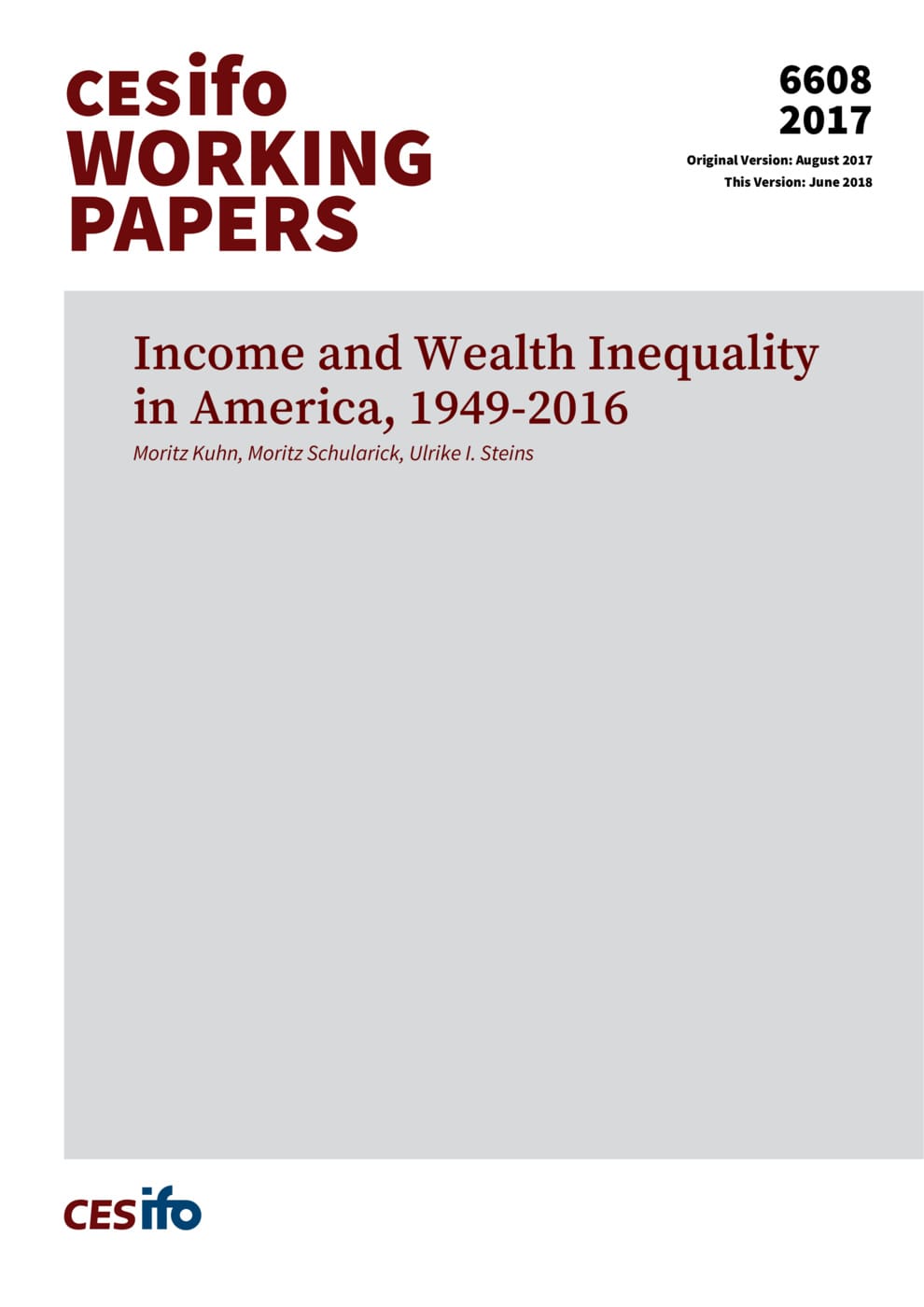Income and Wealth Inequality in America, 1949-2016
CESifo, Munich, 2017
CESifo Working Paper No. 6608

This paper introduces a new long-run dataset based on archival data from historical waves of the Survey of Consumer Finances. The household-level data allow us to study the joint distributions of household income and wealth since 1949. We expose the central importance of portfolio composition and asset prices for wealth dynamics in postwar America. Asset prices shift the wealth distribution because the composition and leverage of household portfolios differ systematically along the wealth distribution. Middle-class portfolios are dominated by housing, while rich households predominantly own equity. An important consequence is that the top and the middle of the distribution are affected differentially by changes in equity and house prices. Housing booms lead to substantial wealth gains for leveraged middle-class households and tend to decrease wealth inequality, all else equal. Stock market booms primarily boost the wealth of households at the top of the distribution. This race between the equity market and the housing market shaped wealth dynamics in postwar America and decoupled the income and wealth distribution over extended periods. The historical data also reveal that no progress has been made in reducing income and wealth inequalities between black and white households over the past 70 years, and that close to half of all American households have less wealth today in real terms than the median household had in 1970.
Fiscal Policy, Macroeconomics and Growth
Empirical and Theoretical Methods